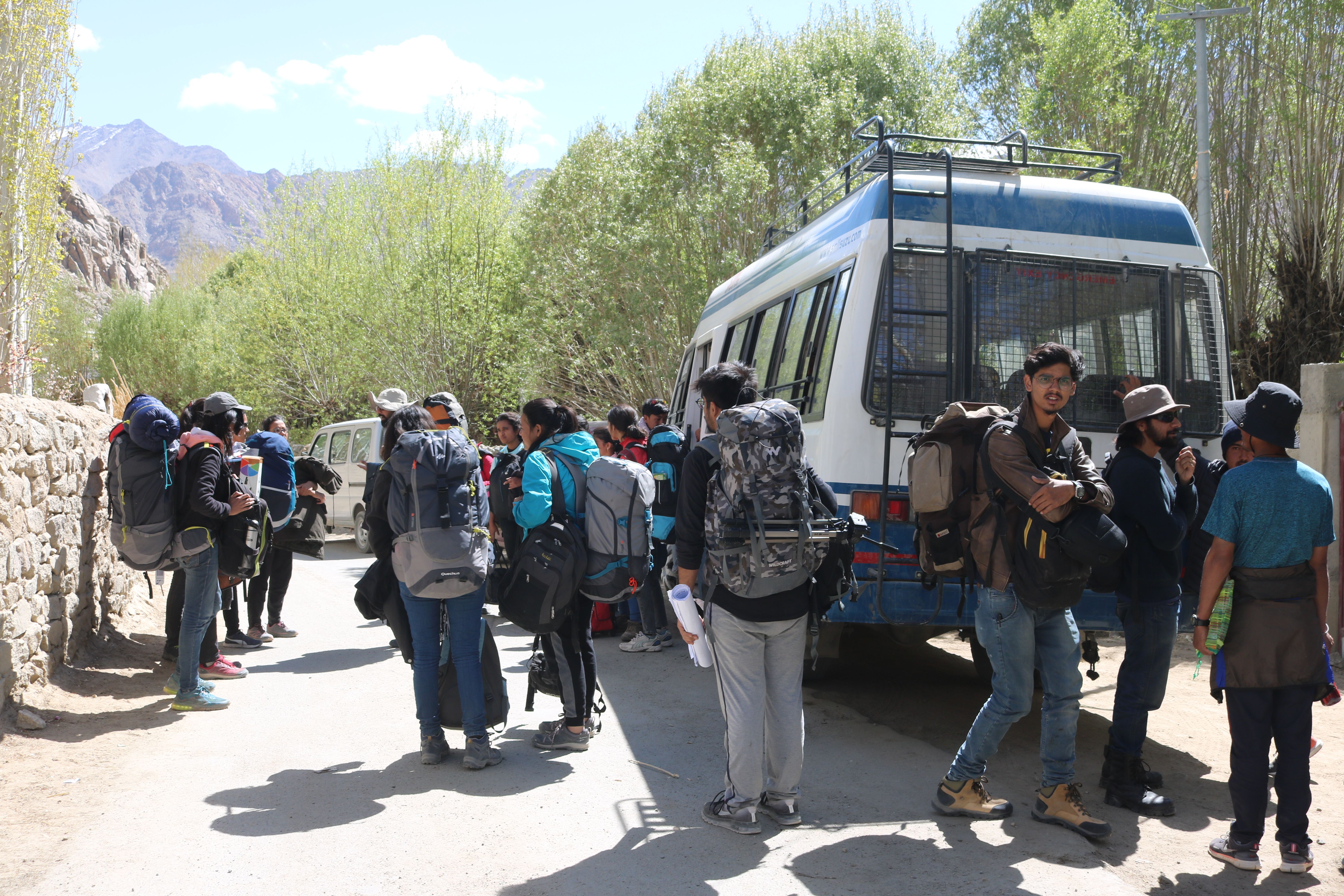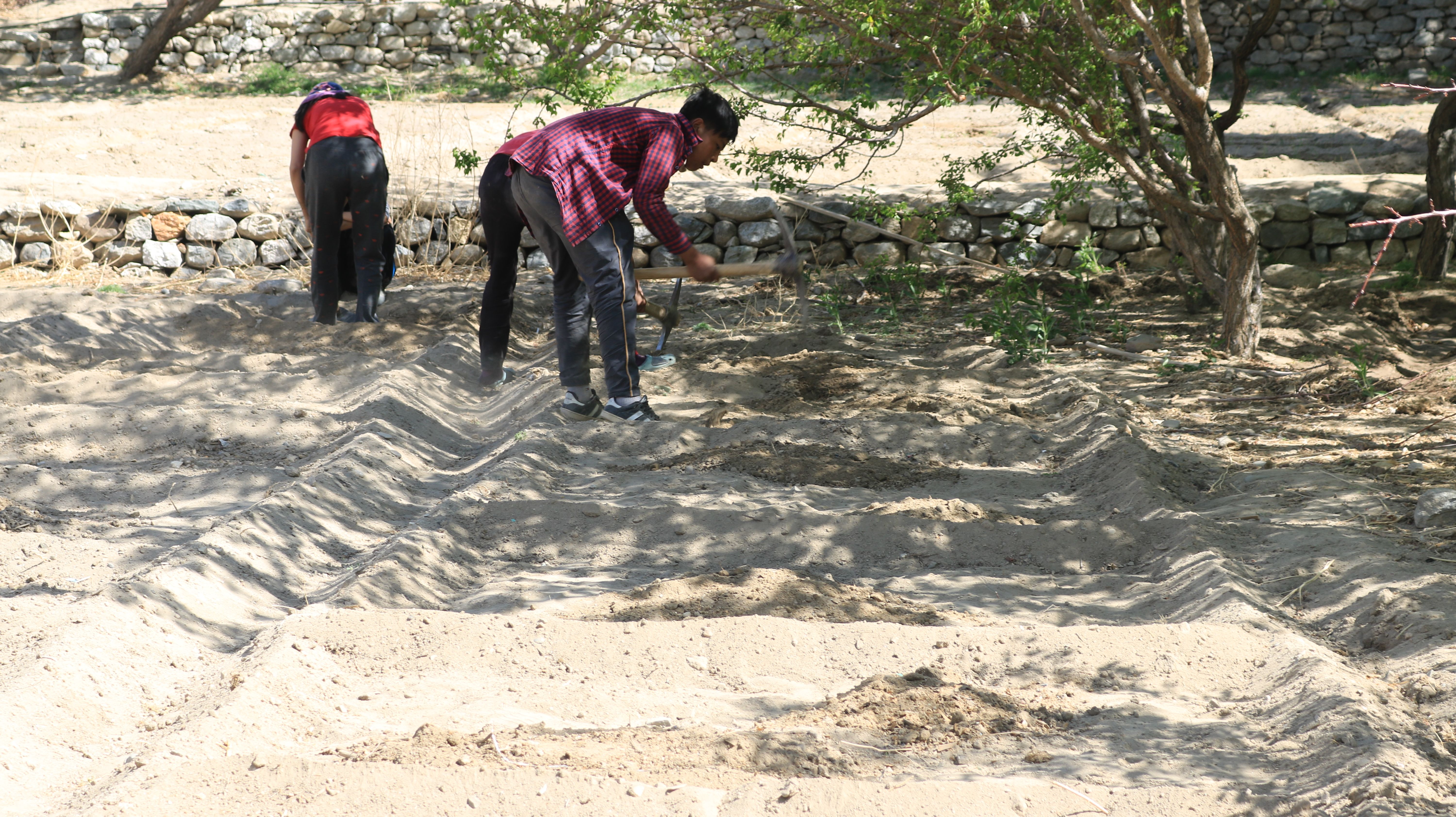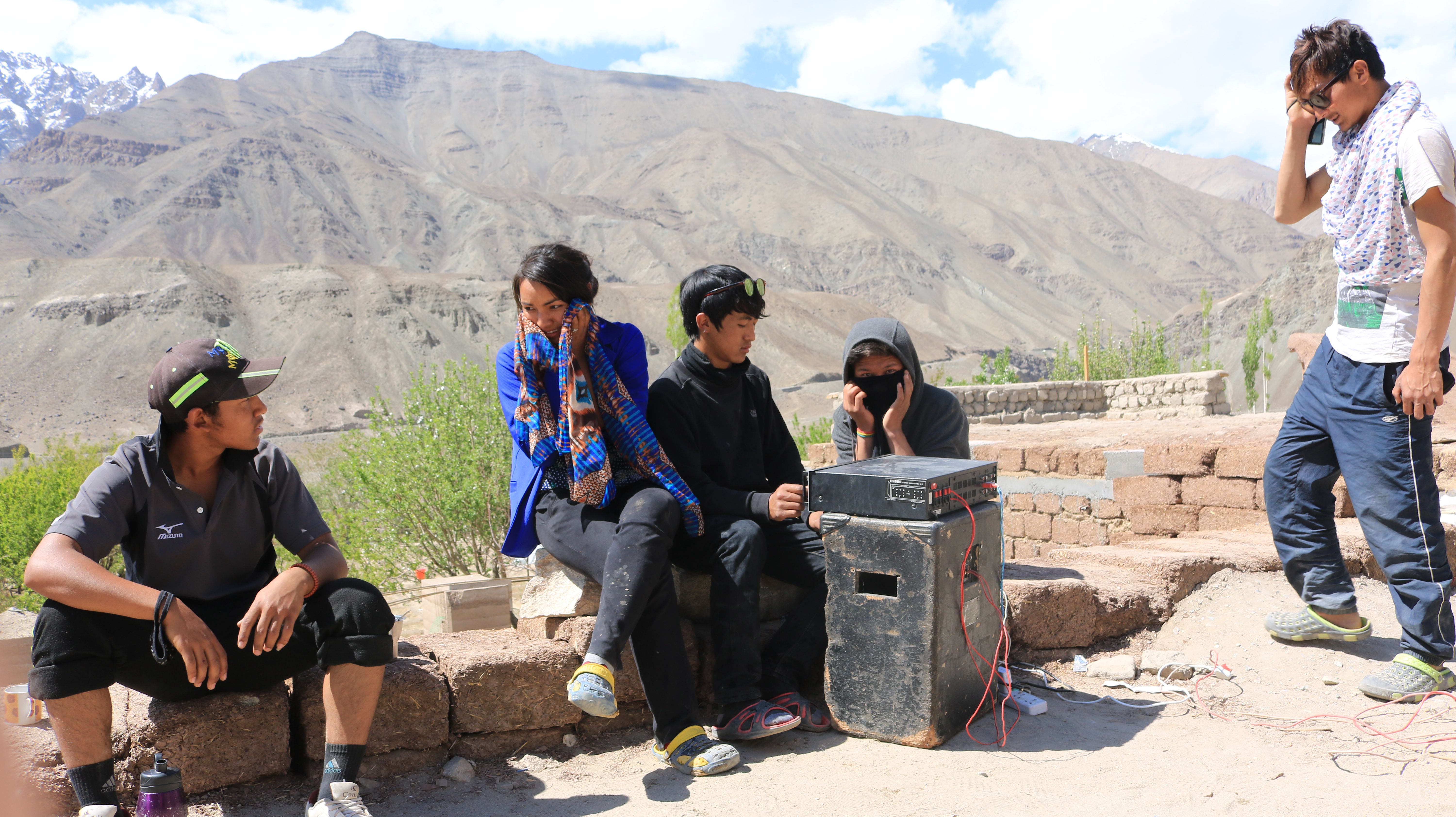Stanzin Chokrap is 18 years old. A year ago, he dropped out of school.
“I don’t like to study so I ran away from the school,” says Chokrap, who used to attend a local government school in the Ladakh region of India.
At an altitude of about 10,000 feet, Chokrap’s village lies in a valley that is a popular tourist destination, accessible only for a few months in a year due to extreme winters and a shortage of electricity, food and other essential supplies.
Villages in the valley are sparsely populated and government schools, where absenteeism among teachers is common, are located in nearby towns. The Ministry of Human Resource Development (MHRD) in its 2014-15 survey found that the average dropout rate was 17.86 percent at the secondary level.
After quitting his studies, Chokrap went to the Siachen glaciers where he worked as a porter, helping the Indian Army. The glacier is a disputed land that falls between India and Pakistan, known for being the world’s highest battlefield and also for its harsh winters. For teenagers like Chokrap, the job of a porter is easy to get but comes with great risks.
Then, in 2016, on advice from a friend, Chokrap attended a camp organized by the Students' Educational and Cultural Movement of Ladakh (SECMOL) and decided to enroll in a foundation course at the school. He is now one of approximately 70 students who attend this alternative education school.
Chokrap looks forward to a promising future with his family in his village. “I don’t like to run after money,” says Chokrap. “After [going to] SECMOL, I have decided to be a tour guide and help my father in my village. . . I used to think only government jobs are the good jobs to do in life.”
“I also want to have a big yak farm,” continued Chokrap. He hopes to produce milk products and wool from his farm and to educate villagers about solar technology.
Born out of profound dissatisfaction with the poor conditions of the school education system in Ladakh, SECMOL began as a movement in 1988. It was led by a group of young Ladakhis who felt the need to do something after test results showed that only 5 percent of the 10th grade students passed their exams. They paved the way for several educational reforms in government schools of Leh district of Jammu and Kashmir: The language of textbooks changed, teachers were trained, and village education committees were formed.
The number of students who completed 10th grade rose dramatically from 5 to over 60 percent. Former Indian President A.P.J. Abdul Kalam came to Leh to inaugurate a new phase of the educational reform in 2006.
But SECMOL had to end its partnership with the government after the local deputy commissioner MK Dwivedi attacked SECMOL with accusations that the organization claims to be false.
The deputy commissioner accused SECMOL and its director, Sonam Wangchuk, of occupying government land, maintaining anti-national connections in China, and serving as a threat to the administration. These accusations came after Wangchuk publicly criticized the local government for neglecting the educational needs of the region.
Based on these accusations, Dwivedi filed a court case against Wangchuk which lasted for six years. Meanwhile, Dwivedi continued to issue notices against SECMOL and banned public protests after people fought back in support of SECMOL. Although the former director of SECMOL was found innocent in the court case on July of 2013, SECMOL decided to withdraw from educational reforms within the government to focus on its Alternative Institute, now known as “SECMOL,” in Phey.
And yet, SECMOL continues to have a large impact:
Students from the nearby villages in the Ladakh region often first join camps organized by SECMOL and then decide to attend the school. The most basic qualification for their admission to SECMOL is that they have failed in 10th grade. Many of them, like Chokrap, have also dropped out of school.
According to UNICEF, “alternative education is the overarching term that refers to all types of education programs that are often not considered formal education programs by agencies, governments, and donors. Often, but not exclusively, alternative education programs are offered outside the auspices of the formal government and education system.”
Such institutions of alternative education are believed to help the students think differently. These schools can be found in various states throughout India and are most prevalent in primary education. Whether or not the alternative education models fit the criteria of a “school” as defined by the Right to Education Act is highly debatable.
Many students in India find themselves stuck in a rigid curriculum that emphasizes theoretical knowledge more than practical experience. Well-respected professional institutions demand that students achieve top marks in their secondary examinations and entrance exams. India has the highest suicide rates among youth, according to a World Health Organization report published in 2012. The linkage between academic pressure and suicides has been more visible recently. The National Crime Record Bureau, an Indian governmental organization, reported nearly 2000 deaths in 2014 among students because of failure in examinations.
However, alternative education is believed to decrease stress levels among students, increase their understanding of the subject through practical experience, improve their personality, and boost confidence.
SECMOL is an educational initiative that it is unique—blending education local needs and global exposure. “Here we do activities, we do talent show, we play games,” Chokrap explains with excitement. “SECMOL gave me an idea—you can do your own job.”
Students take on various responsibilities from farm to kitchen. In May of every year, students start farming and grow various fruits and vegetables. Greenhouses are maintained and run by the students, and a storeroom is used as a natural refrigerator for food. Farming remains a part of the Ladakhi cultural heritage.
The SECMOL campus has achieved an eco-friendly status by adopting sustainable solutions. Solar energy is used to cook food, heat water and provide electricity. Compost toilets provide a great fertilizer for the farms and also reduces the amount of waste produced.
Cleaning, receiving guests, housekeeping, cooking, and even the construction of the campus are done with the help of the students.
“If they make the system, they don’t want to break the rules,” says Kanchok Norgay, director of SECMOL. Norgay first joined SECMOL in 1999 and has helped it grow.
Student groups and volunteers are invited from India and abroad for educational and cultural purposes. By communicating in English, volunteers help the kids improve their language skills, sharing their knowledge crafts, language, calligraphy, or other arts.
One such volunteer is Hemani Jain who is doing her fellowship at SECMOL . She is a part of a non-profit educational organization in Mumbai, and at SECMOL, she gives mathematics lessons to the kids in the foundation year.
“The first thing that I saw over here is that the entire campus is student-led, which is a very unique thing,” says Jain.
“We just produce some students who are very good in academics but they don’t know how to apply that knowledge in real life,” Jain says. She has lived in 11 cities across India. In spending a month in SECMOL, she hopes to learn creative ways to apply knowledge to real.
“I didn’t know anything about Ladakh but I love working with students. So I came here and (now) this is my second home,” says Malin Linderoth, the volunteer coordinator at SECMOL, who came from Sweden in 2014.
The students “are not afraid to speak their mind." Linderoth adds, "And we try to open their minds to broaden their views, to see beyond Ladakh as well.”
Many student groups also visit SECMOL to learn about architecture and solar technology. When asked how alternative learning is different from a conventional school education, Ronak, an architecture student from Mumbai, answers, “Basically this education system is without peer pressure. There is no pressure of excellence—it’s all about learning.”
A prominent figure in the movement, Wangchuk, has plans to put together a university based on alternative education so that students in Ladakh can continue their higher education in a nonconventional way.
SECMOL is one of the many examples of an alternative education that places more emphasis on practical learning and individual learning with minimum stress on academic excellence.
Positively impacting children such as Chokrap, alternative education is helping generation Z in the rural areas to be more creative, develop a problem-solving attitude, and think globally about sustainability.
The Associated Chambers of Commerce and Industry of India (ASSOCHAM) in 2016 released a report suggesting that only 7 percent of all the business school graduates in India are employable. Another such survey by All India Council for Technical Education reported that more than 60 percent of engineering graduates remain unemployed. These statistics suggest that an urgent intervention to improve the education system in India is needed.
Alternative education is one such intervention, mostly promoted by private organizations in India that favor a non-authoritarian learning model. Although few in numbers, such institutions of alternative education are preparing a generation of students who are more skilled and more practical and who believe in pursuing their own creativity.















